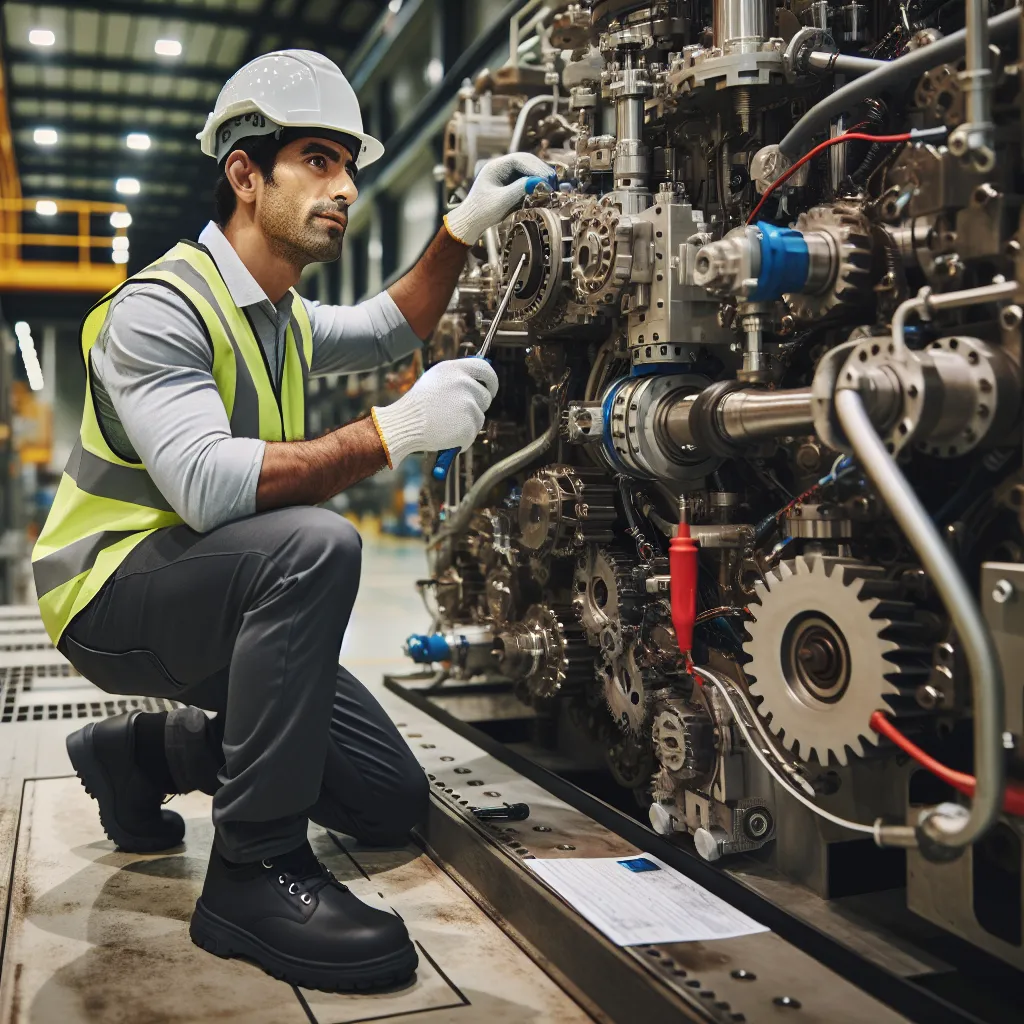The article “Importance of Predictive Maintenance in Industry 4.0” underscores the significance of predictive maintenance in the context of Industry 4.0, highlighting its proactive approach in leveraging advanced technologies such as IoT, big data analytics, and machine learning to monitor equipment performance in real time. The piece emphasizes how predictive maintenance enables condition-based monitoring, fosters a cultural shift towards data-driven maintenance, and supports the transition towards predictive quality. It ultimately extols the benefits of embracing predictive maintenance strategies, such as avoiding costly downtime and repairs, driving continuous improvement, optimizing resource allocation, and enhancing competitiveness in the digital era. The article “Implementing Predictive Maintenance Strategies for Industry 4.0” further delves into the integration of IoT technology, big data analytics, and machine learning algorithms in implementing predictive maintenance, elucidating the crucial role of sensor networks in collecting real-time data and leveraging advanced algorithms to forecast remaining useful life, thus enabling precise timing of maintenance activities. These articles collectively provide a comprehensive overview of the importance and implementation of predictive maintenance, making them essential reads for industry professionals navigating the landscape of Industry 4.0.
Category: Maintenance
The Maintenance category encompasses a wide range of topics related to the upkeep and preservation of various systems, equipment, and infrastructure. It covers maintenance strategies, best practices, and the latest developments in the field, offering insights into preventive maintenance, predictive maintenance, and reliability-centered maintenance. This category also explores the use of technologies such as condition monitoring, IoT, and data analytics to optimize maintenance processes and ensure the efficient functioning of assets. Whether it’s discussing maintenance scheduling, equipment calibration, or troubleshooting techniques, the Maintenance category serves as a valuable resource for professionals seeking to enhance the performance and longevity of their assets.
Overall, the Maintenance category provides a comprehensive overview of the crucial role that maintenance plays in ensuring the dependability, safety, and cost-effectiveness of various systems. It delves into the principles of asset management, lifecycle maintenance, and regulatory compliance, offering practical guidance for maintaining infrastructure, machinery, and other critical assets across industries. From addressing common challenges to highlighting emerging trends, this category equips readers with practical knowledge and insights to streamline maintenance operations and maximize the reliability and lifespan of assets.

Implementing Lean Maintenance Practices for Cost-Efficient Operations
The article “Strategies for Implementing Lean Maintenance in Manufacturing Facilities” provides a comprehensive overview of the key strategies for implementing lean maintenance, emphasizing the importance of preventive maintenance, continuous improvement culture, and technology utilization. By prioritizing preventive maintenance, fostering a culture of continuous improvement, and leveraging technology and data analysis, companies can achieve greater cost-efficiency, improved equipment reliability, and enhanced operational performance. Additionally, “Maximizing Cost-Efficiency Through Lean Maintenance Practices” highlights the significance of proactive maintenance strategies, continuous improvement culture, and technology integration in achieving significant cost savings and operational efficiency. The article engages readers by offering practical insights into implementing lean maintenance practices, making it a valuable resource for those seeking to optimize maintenance processes and reduce operational costs in manufacturing facilities.

The Importance of Preventive Maintenance in Industrial Settings
The article “The Financial Benefits of Preventive Maintenance in Industrial Settings” emphasizes the crucial role of proactive maintenance in ensuring smooth operations and financial stability in industrial environments. It highlights how preventive maintenance not only enhances reliability and productivity but also leads to substantial cost savings by avoiding downtime, repairs, and replacements. Additionally, the article discusses how regular maintenance extends the lifespan of equipment, improves energy efficiency, and reduces operational costs, making it a smart investment for any industrial operation. Similarly, the piece “Reducing Downtime: The Key Role of Preventive Maintenance” stresses the significance of preventive maintenance in minimizing unexpected breakdowns and optimizing equipment performance, ultimately reducing the likelihood of unplanned downtime and production delays. It underscores the value of advanced technologies in enhancing preventive maintenance strategies. Overall, the articles effectively present a compelling case for the financial and operational benefits of implementing preventive maintenance in industrial settings.

Key Strategies for Effective Facility Maintenance Management
The article emphasizes the significance of preventive maintenance in facility management, highlighting its role in ensuring smooth operations, cost savings, and extended equipment lifespan. It emphasizes the importance of developing a comprehensive maintenance schedule, leveraging advanced technology such as CMMS and IoT devices for streamlined maintenance processes, and the shift from reactive to predictive maintenance. Importantly, it underlines the positive impact of incorporating preventive maintenance in enhancing reliability, sustainability, and productivity of facilities while achieving cost savings and improved overall operations. The subsequent section discusses the use of cutting-edge technology, including predictive maintenance tools and IoT devices, to achieve streamlined and proactive maintenance operations. It underscores the pivotal role of CMMS in comprehensive facility maintenance, the benefits of real-time monitoring and analysis of equipment performance through IoT devices, and the use of predictive maintenance tools to forecast equipment failures and prioritize maintenance tasks. Ultimately, the article provides a compelling case for the integration of preventive maintenance and advanced technology in facility management to achieve efficient, cost-effective, and sustainable maintenance practices.

Maximizing Equipment Uptime: Best Practices in Maintenance and Reliability
The article highlights the significance of proactive maintenance strategies in industrial settings for ensuring equipment uptime and operational efficiency. It emphasizes the adoption of predictive maintenance techniques like condition monitoring and predictive analytics, which aid in identifying potential issues before they become major problems. Additionally, the implementation of reliability-centered maintenance principles is advocated, focusing on tailoring maintenance strategies to specific failure modes. The article also emphasizes the importance of fostering a proactive maintenance culture within organizations through comprehensive training programs and collaborative efforts. Furthermore, the role of predictive maintenance in improving equipment reliability, maximizing uptime, and extending the lifespan of critical assets is underscored. Overall, it encourages readers to explore the detailed insights provided in the article to enhance their understanding of proactive maintenance and its impact on operational excellence.

The Importance of Preventive Maintenance in Industrial Settings
The article highlights the significant impact of preventive maintenance on industrial equipment efficiency. It emphasizes the benefits of regular inspections, lubrication, and minor repairs in enhancing productivity and minimizing disruptions in the production process. Furthermore, well-maintained equipment operates more efficiently, consumes less energy, and contributes to improved product quality, aligning with sustainable business practices. Implementing preventive maintenance not only optimizes operational performance but also positions companies as leaders in reliability and sustainability. Additionally, it emphasizes the benefits of minimizing unexpected downtime, extending machinery lifespan, enhancing workplace safety, and improving operational efficiency, emphasizing the positive impact on the overall efficiency, safety, and cost-effectiveness of industrial operations. Readers are encouraged to delve into the full article to gain a comprehensive understanding of the benefits of implementing preventive maintenance in industrial settings.

